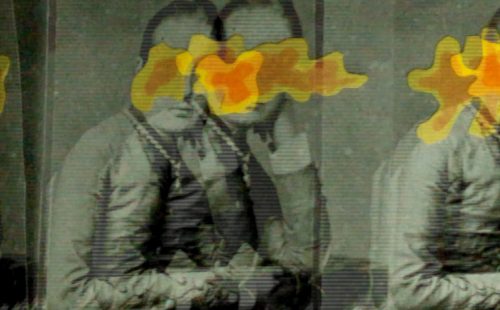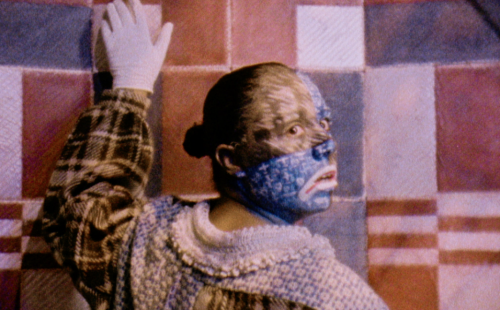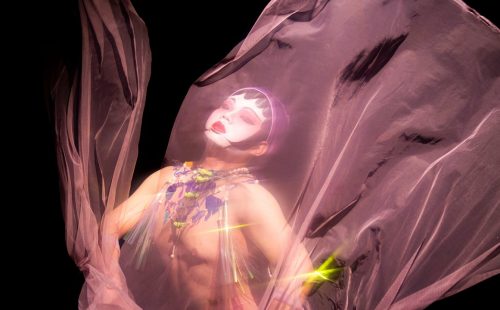Annis Joslin
echo
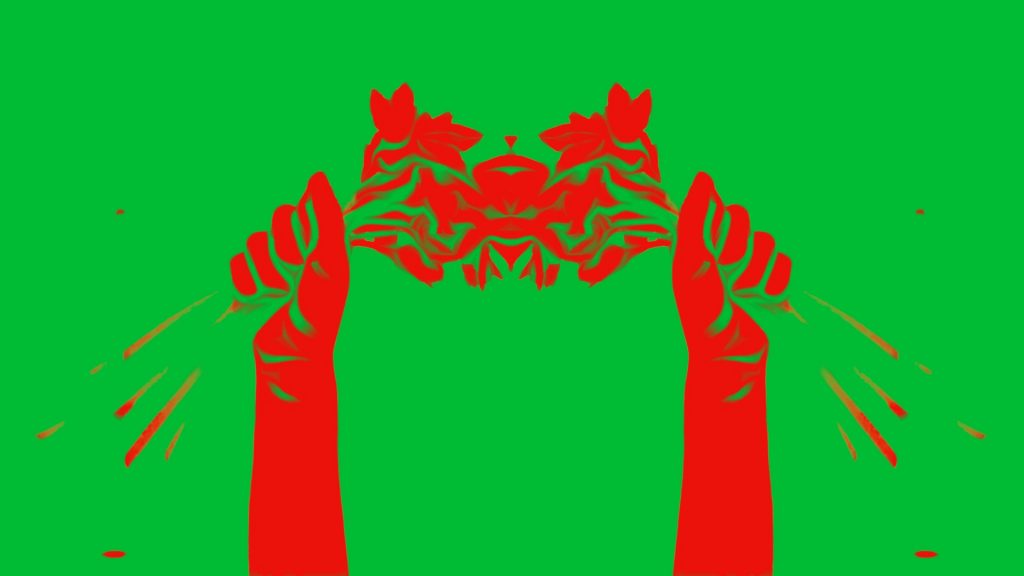
An egg, top hat, clothes pegs, bird cage and a line of rope – these are just a few of the objects that inhabit the world of echo. In a multi-channel video installation projected across and above the museum cabinet, these objects exit the confines of the film’s original narrative into different realms of time and space.
The objects take on an energy of their own, activated by different hands or animations, playfully shifting, mirroring each other in a dance, turning inward and outward. Accompanying this visual journey is a soundtrack crafted through the digital processing of ASMR-style recordings, capturing the tactile sensations of the objects being manipulated and interacted with.
echo reanimates the objects and actions depicted in some of the early films made by Brighton and Hove’s film pioneers, tapping into the spirit of innovation in digital video collage, utilizing imagery and sounds generated during participatory public events and a workshop with The Wonder Club.
echo presents videos in both monochrome and purposefully intense, digitally-processed green and red, paying homage to George Albert Smith’s 1906 invention of Kinemacolor.
The artist would like to thank all participants for their rich and valued contributions to the making of aspects of this work.
Annis Joslin is an artist and filmmaker with a collaborative approach, making work through conversations and participatory encounters with others. She adopts drawing, animation, photography, performance, collage, storytelling and video into and lens-based work. Annis has shown work in the UK and internationally with screenings, exhibitions and projects with organisations including People United, The Fine Arts Film Festival California, Phoenix Art Space Brighton, The Royal College of Physicians, The National Trust, Tate Exchange, The Women’s Library, and The Walker Art Gallery Liverpool.
Connor Turansky
Reimagining the Archive
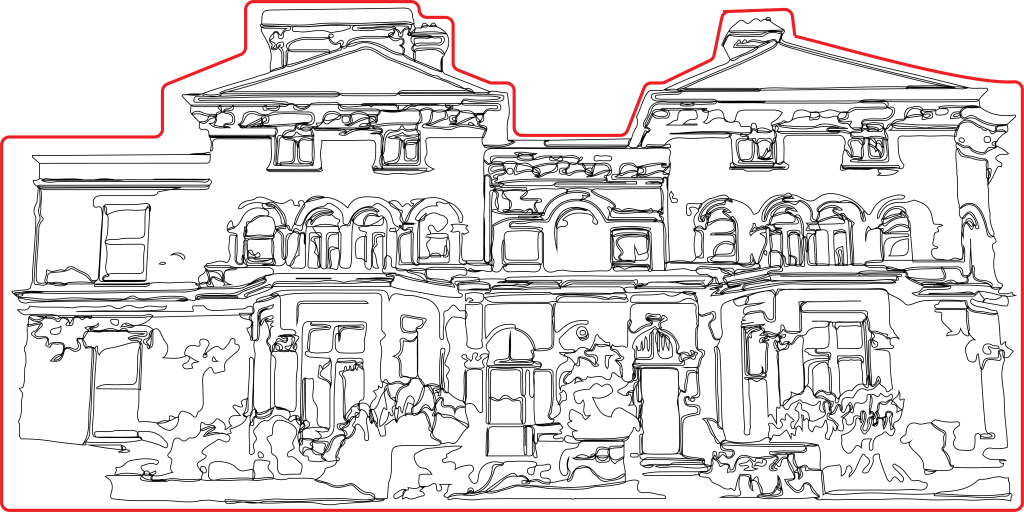
From traditional brick-and-mortar institutes to modern digitized collections, the ways we record and document human traces continue to evolve. As archival processes are updated with technological advances, the relationship between preservation and authenticity can change and refocus.
This project explores the relationship between traditional and ‘high-tech’ practices and how they can be combined to explore new archival processes. This series of three pop-up books using augmented reality and paper engineering act as playful, accessible interventions.
The term ‘metaverse’ is often used to describe the convergence of physical and virtual spaces. Persistent ways of sharing, documenting and learning. These digital facsimiles have the potential to be the ‘new’ way of exhibiting and archiving, but can still be hindered by the same limitations of past recreational techniques.
Perhaps these novel pop-up books can be their own contribution to the metaverse, existing as both physical and digital archives; of not just an object,but a glimpse into the historical wonderment of experiencing something unexpectedly new.
Scan the image inside each of the three cabinets to access the augmented reality content for each book inside..
1. Brooker Hall
2. Motion
3. Colour
Connor Turansky is a visual artist and educator. Combining photographic methodology with various mediums: mixed reality, paper engineering, electronics and projection mapping, he builds interactive experiences, create worlds to be explored and designs mechanical contraptions.
Sapphire Goss
Mechanical Marvellous

Collaging archive material from Screen Archive South East with newly shot footage, Goss builds a phantasmagoric world travelling through time, space, colour and dimensions.
Mechanical Marvellous is viewed both by looking up and down. Peering into the hand-crafted rosewood and brass box creates an intimate ‘analogue VR’ experience. Simultaneously, the image seems to mysteriously emanate from the box up onto the ceiling.
Inspired by proto-cinematic techniques such as stereography and the kinetoscope, the work also explores the pioneering work on early colour cinematography happening in Brighton and Hove at the turn of the 20th Century. This includes hand-tinting/toning and the split colour filter techniques of Kinemacolor. Using custom-made prisms and filters on hand-wound clockwork cine cameras, Goss shot new footage around Brighton & Hove on expired 8mm and 16mm Kodachrome, developed using a non-chemical coffee-based developer.
The work reanimates the archive and obsolete technologies, creating new work permeated by layers of time, light, chemicals and memories. It makes links between the cameras and optical devices on display here and modern technology in general. When so many of our devices are seemingly impenetrable black boxes, what might these mechanical marvellous processes tell us about how we see, document and tell stories about the world around us, and how we might shape the future.
Sapphire Goss works with moving image, photography and other lens-based methods. Using obsolete technologies and unexpected materials, she creates chimerical work that grows, lives and decays beyond the surface, frame edges and the looking glass of the image. Goss’ work has been shown widely in exhibitions and events including the Barbican, Tate Exchange, By Art Matters Hangzhou, Fermynwoods Contemporary, Milton Keynes Art Centre, East End Film Festival, and Maysles Centre, New York.
Bella Okuya
I Wonder
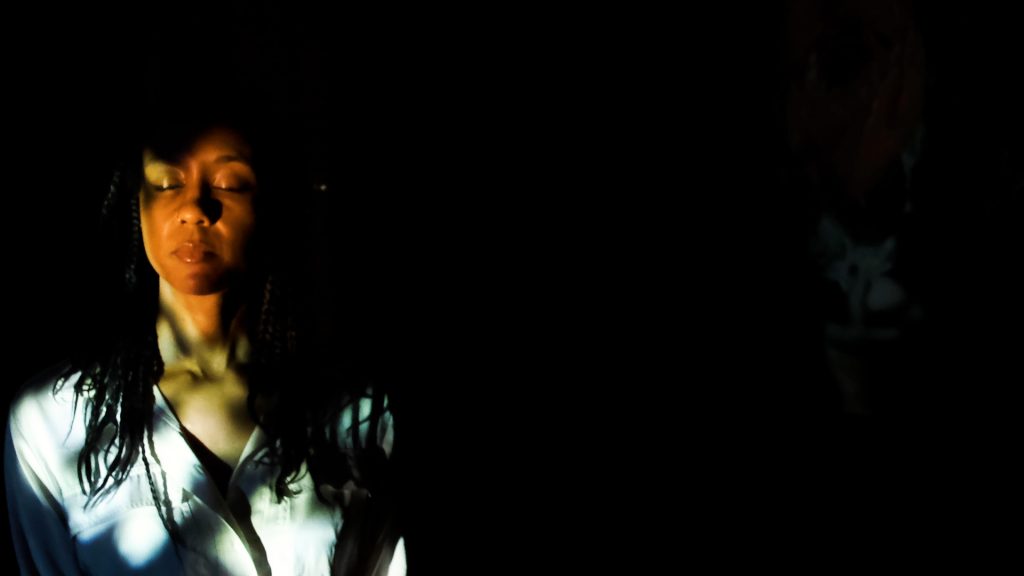
I Wonder is a single-channel digital video response to Bella’s residency with Brighton and Hove’s filmmaking archives and her research into the unseen figures in early filmmaking history. Bella’s approach involved trying to unearth representations of diverse, marginal figures, such as women, queer communities and people of colour. The artist found these representations to be hidden, unknown, or unavailable.
I Wonder symbolises Bella’s attempt to intersect past, present, and future into early filmmaking history in Brighton and Hove, by directly positioning herself into the visual frame, bringing living, breathing visibility to what doesn’t exist, while creating space and time to imagine.
Bella Okuya is a London-born and based interdisciplinary artist working across moving images, writing, and sound. Her artistic focus primarily involves centering the inner landscapes of diverse communities by blending elements of fiction with poetic imagery. She is interested in exploring tensions and frictions between spaces, places, power, and wellbeing in society, particularly in relation to marginalised groups. Her work is underpinned by the pillars of sound, silence, and spirituality. Bella has an MFA in Photography from Parsons School of Design, The New School, New York, on a Fulbright All Disciplines Award and she is a member of the British Art Network Emerging Curators group, researching French and British film and moving images related to narratives around the black diaspora and abjection.
The Wonder Club and Chahine Fellahi
Visions
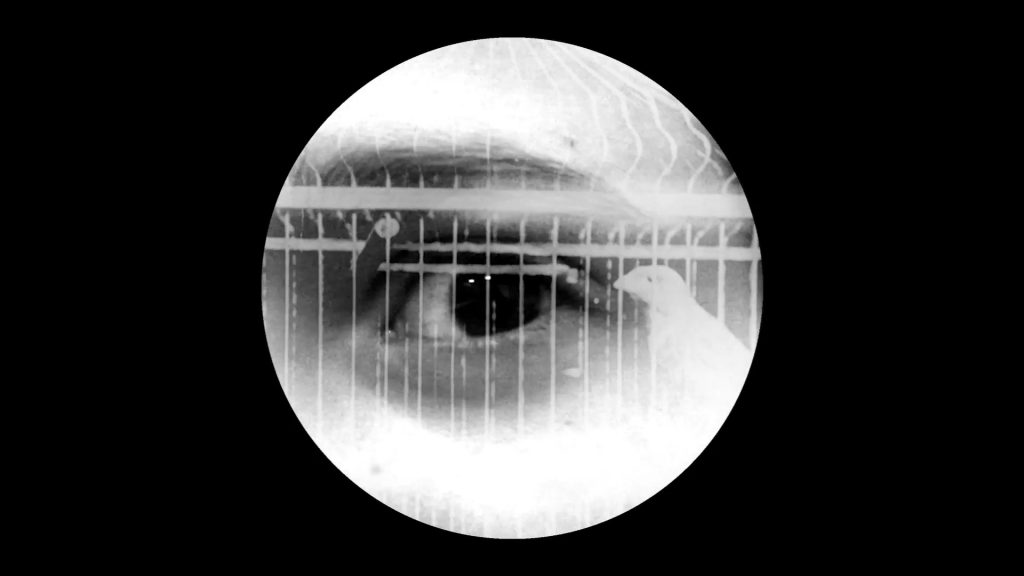
A short film was collaboratively created by young people with artist Chahine Fellahi in response to watching films selected from Screen Archive South East’s extensive early film collection. The concept emerged during a Wonder Club workshop focused on “the vision scene” and other early techniques developed by film pioneers of the Brighton School. The vision scene was frequently employed to convey subjective experiences – such as dreams, memories or hallucinations—using innovative techniques such as superimposition and double exposure. Young people were tasked with creating their own “vision” by selecting a film clip and interpreting it in a performative way. The resulting interpretations were compiled into a series of film “visions,” utilising a circular frame reminiscent of the formal approach often seen in vision scenes. This circular framing technique pays homage to the style of circular double exposures seen in films like George Albert Smith’s “Santa Klaus.”
“Last night I dreamt that..”
This series of prints were crafted by participants of The Wonder Club during a workshop delving into “the vision scene” and the depiction of dream elements in magic lantern slides, employing techniques like double exposure and superimpositions. Participants selected 35mm found slides, overlayed and transformed them creatively through direct interventions like drawing, painting and scratching. They were then prompted to write and record an interpretation of the resulting image as a dream vision, beginning with the phrase “Last night I dreamt that…”
The Wonder Club is a creative programme for young people aged 13 – 18 years interested in experimental filmmaking and visual arts.
Led by artist Chahine Fellahi this monthly meetup explores early filmmaking, fusing analogue and digital, rekindling the spirit of discovery, enchantment and innovation reminiscent of the Hove Film Pioneers.
The Wonder Club 2023/24 are:
Evie, Peggy, Araminta (Minty), Amber, Meadow, Rosana, Rowan, Arthur, Charlotte, Sophie, Juliana, Kitty-Rose and Michael
Chahine Fellahi is an artist-filmmaker and facilitator based between London and Casablanca. Working across analogue and digital processes, her practice revolves around the politics of archives, exploring relations and borders between the materiality of media and the making of memory. She is the co-founder of Kimiã, a collective dedicated to experimental practices in film, photography, and media arts. She has delivered participatory projects with diverse audiences in collaboration with institutions such as the Cinematheque of Tangier, the Arab British Centre, and Mosaic Rooms in London.
The Wonder Club team is Louise Conway and Zoe Montgomery.
Days of Wonder is produced by Corridor and videoclub in partnership with Brighton & Hove Museums and Screen Archive South East with support from Arts Council England and National Lottery Heritage Fund.




